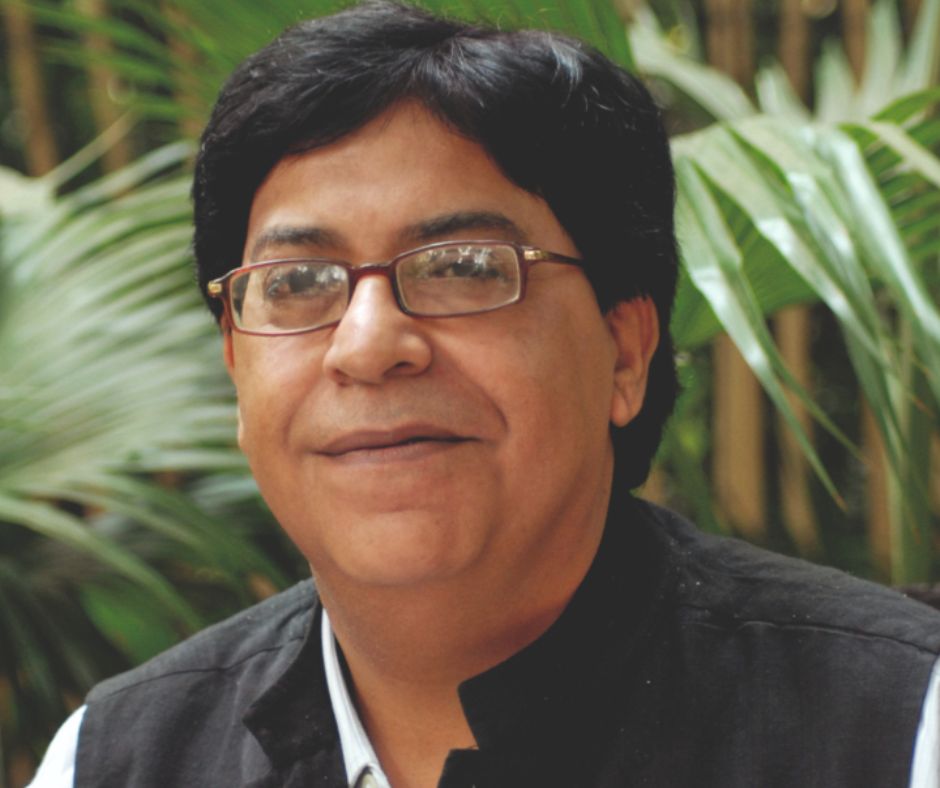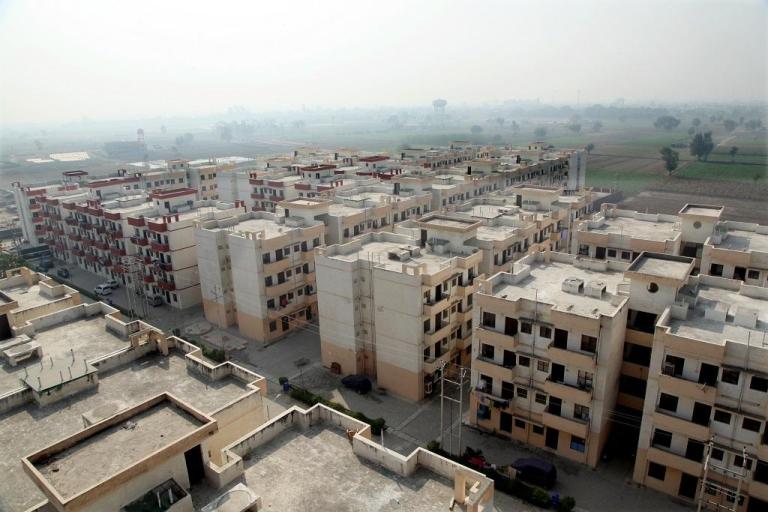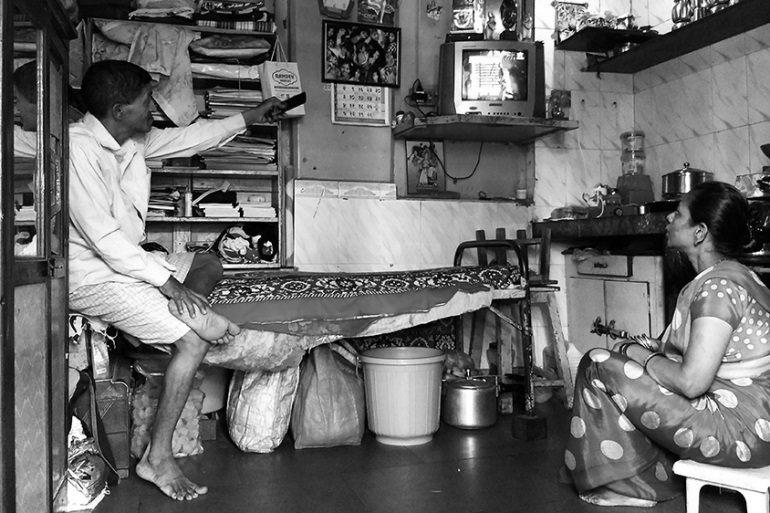THE SEARCH FOR AN ‘INDIAN’ IDENTITY
At the risk of sounding clichéd we shall pose the question – What does it mean to be ‘Indian’? The Council of Architecture’s rules requires the architect to be an Indian citizen (Council of Architecture – India, 2010). The Indian government considers him as its own, who holds an Indian passport and resides in India for at least 182 days in a year (Ministry of Finance – India, 2020). It is a definition for the ‘Indian’ identity, but it does not yield any meaning which can inform the architectural process. Professor Fearon published (in the Stanford University Press) a 40 page paper detailing 14 different definitions of ‘identity’ (by anthropologists, social scientists, political commentators, and biologists); conceding that an answer to identity depends both on the question and the context (Fearon, 1999).
Maybe our ‘identity’ is a tool for our minds to anchor our experiences of the past, present and future to this body, and establish a sense of continuity. It seems only natural that we extend this personal search for continuity into the search for a ‘national identity’. This search for the truest of ‘desi’ roots has been one that has long held the Indian fancy, sparing not Rabindranath Tagore, or V. S. Naipaul, or even the Ministry of External Affairs – which has launched the ‘Tracing The Roots’ program to assist people of Indian origin with tracing their roots back to India (Overseas Indian Affairs – Ministry of External Affairs, 2016). One wonders if life imitates art (or in this case, Bollywood). Incidentally, even Indian art has been the victim of this search for an authentic Indian identity, as the eminent Indian artist Jagdish Swaminathan noted, ‘Modern Indian art, by and large, has been inhibited by the self-defeating purposiveness of its attempts at establishing an identity’ (Sambrani, 1994).
In India, after 1947, architecture had matured enough to indulge in collective soul-searching. The post-Independence era saw the reduction of the study of design to ‘a deterministic attitude’ towards ‘functional rationalism’ (Mehta, 2006). Mehta laments the gradual transformation of architecture into a technical discipline in the 1950s (Mehta, 2006); which was around the same time our first Prime Minister exhorted the nation and its architects to look to the West and to the future with a critical observant eye. Their ‘creative approach’, which was ‘not being tied down to what has been done by our forefathers and the like, but thinking out in new terms’ was held forth as an approach worthy of emulation (Nehru, 1959). Yet Lang et al note that in India there was still a lingering psychological impact of colonial rule on architectural production (Lang, Desai, & Desai, 1998). This ‘post-colonial trauma’ in architecture, as they describe it, saw the then architects groping for meaning in the 1960s in the cavernous concrete of Modernism, followed by the nostalgic wave of Revivalism in the 1980s, and so forth before trooping back to the proverbial pavilion of the ‘local’ (Lang, Desai, & Desai, 1998). Mehrotra et al examine how the modern Indian architect was satisfied with fencing with the tricky nebulous web of an ‘Indian’ identity by pointing at it with regional materials and familiar symbols (Gupte, Mehrotra, & Shetty, 2004). Is it the case that for Indian architecture, the ‘duck’ and ‘shed’ dichotomy has dissolved into a blurry spectrum of Mangalore tiles, floor plan mandalas and rammed earth walls ; to be sampled as per taste at the free for all ‘vernacular’ buffet?
It may very well be the case that the architect is ill-equipped to deal with the question of identity today, much less the ‘national’ identity of our architecture. Mehrotra et al contend that architecture seems too meagre a medium to determine the experience and execution of nationalism today (Gupte, Mehrotra, & Shetty, 2004). They ask the pertinent question ‘For whom is the regional identity created?’ when the architecture espouses local materials and regional building processes (Gupte, Mehrotra, & Shetty, 2004).
When we consider that most of the contemporary architectural projects that we consider to be ‘local’ are in a city, where their translation of the ‘village’ into a museum or a posh home is devoid of the context that framed the muse; does it matter if the details are lost in translation? (Gupte, Mehrotra, & Shetty, 2004) This polemic is not intended to stifle the discourse and exploration of our architectural identity. It is merely an attempt to keep the debate and practice of meaningful symbolic architecture alive.
The Chinese philosopher Lao Tzu opined that, ‘Ritual is the husk of true faith’ (Tzu, 600 BC). Let us not settle for the ritual of an architectural ‘national’ identity that is divorced from the immediate reality it is amidst. The search for the answer is as important as the resolution of the question; as we derive meaning in action, and joy in its recollection.
THE INDIAN ARCHITECTURAL PROFESSION TODAY
We must look at architecture as a profession and its context in India today in detail before exploring our potential roles in serving to build our nation. This exploration shall be structured into three stages: 1) the challenges to the practice of architecture in India today, 2) the challenges to the practice of a licensed profession in India today, and 3) a discussion on the role of professionals in a society in contrast to other forms of business and the relevance of this difference.
- Today, the profession of architecture faces many challenges in India. Some of them include:
- The unregulated practice of architecture by non-architects in private and government initiatives
- Lack of adequate legal remedies to rectify issues in rendering architectural services
- Galloping changes in standards in both architectural education and industry practices
- Inadequate presence of architects in the institutional and executive spheres of government
- We must note that these concerns are of particular interest only to architects, and the professional and academic communities associated with architecture. The common Indian woman and man are beset by concerns more immediate and cognisable. Yet, it is imperative that we set our house in order before we attempt to render services designing the houses of others.
- There is a greater set of challenges that today plagues all professions – the lack of legal and procedural protections for these services from technological and operating disruptions. Some examples:
- The fast advances in our world today have made it difficult to maintain a doctor’s clinic, a lawyer’s firm, or an accountant’s concern without the motive of growing profits.
- These legal entities are encumbered by a lack of ability to pivot their standard operating procedures to secure important commissions.
- The chief professional is often personally or professionally liable for their services.
- The inability to raise capital, attract non-vested investment or debt capital from financiers outside the field.
- The extremely circuitous procedures required for creating partnerships or composite entities of enough critical mass to compete with bigger Indian entities or with the corporates based abroad.
- The licensed but professionally liable practices are at a competitive disadvantage, when shadow firms offering parallel or subsidiary services without the licensing regulations, can capture the market at rates of lower risk and higher productivity.
The need for governments to step up on these fronts is essential because of the magnitude of professional responsibilities that these professionals shoulder for society. If professionals are the only individuals liable for maintaining the quality of services while the allied fields can outcompete and encroach upon their scope of services; the quality of services will suffer at the hands of scraping a livelihood. For architecture, in particular, this knife cuts both ways. Indian legislation may have special provisions for handling medical negligence; yet, imagining a similar medium for architectural services would pose many interesting puzzles for architectural practices that we must be ready to resolve before demanding the creation of such a provision.
3. The Council of Architecture defines the professional duties of the architect in great detail.
It also details the extent of professional liability and its necessary conditions. Yet, these guidelines also assure that the architect is protected from unpredictable market forces by the Council’s Scale of Charges and guided to render legally defined scope of services via the defined Conditions of Engagement. Thus, being a professional invariably implies services rendered for defined fees. It is not the pursuit of profit; and if profits occur, it can be taken as indicative of the appreciation of the services rendered; for it is categorically not a goal in itself.
If the architect chooses to play with the unlicensed vagaries of the invisible hand of the market for profit; then will they not be vulnerable to all the risks that any other business venture would face? It is a case of wanting to have the cake while simultaneously attempting to eat it! It renders the impression that the practice of architecture is an entrepreneurial initiative and not a licensed profession requiring a corpus of knowledge and experience. Such an attempt by even a single architect, both morphs the identity of architecture as a service and slowly manoeuvres the practice of the entire architectural community into a competitive and unethical profit-seeking enterprise.
It is frightening to imagine the world we would create as a result of the practice of an architecture which is subjected to the ruthless whims of the market, unprotected by even this most meagre of guidelines. If the argument is that we already are in the situation described (in light of the recent Supreme Court’s rulings), then we must fear the worst upon opening the legal floodgates. If we are to grasp the implications of this situation, we would understand the technical and ethical illegality of attempting to practice architecture as an incorporated company or a private limited venture. It is important for the profession to be enshrined in the laws that currently regulate it and ensure its proper practice.
Yet how do we ensure the proper discharge of architectural services, much less build our nation through it?
UNDERPINNING THE FOUNDATION OF ARCHITECTURE
There are extremely important measures that need to be undertaken to empower and enable our profession before we can indulge in the discussion of architecture and its role in nation-building.
- The lack of legally tenable definitions for architecture and architectural services prevents us from maintaining the spirit of the act as mandated. The overlapping domains of engineering, arts and humanities are not an obstacle; but an opportunity for us to integrate their domains in a defined manner into the spirit of architectural services, and not indulge in turf wars. Resolving this definition and maintaining its legal potency via representative and legal forums for preventing malpractice (by both architects and non-architects) is an extremely important step (the establishment of which has already been initiated by the Council of Architecture as of the writing of this essay). Growth of these forums would help common people understand the scope of services they must demand from an architect and the importance of a construction team headed by architects. This forum should also help clients and architects resolve their difficulties via options for arbitration.
- The modification of contract and tender practices which requires architectural services to compete on price as opposed to the quality or approach of the practice is a direct violation of the Architects Act of 1972. This act clearly defines the Scale of Charges and Conditions of Engagement of an architect(s), and the ‘L1 lowest bidder’ process is not a legally valid way to select an architectural practice. This selection may be made according to relevant experience in the typology of projects, or by a closed/open call for proposals. This shall ensure that projects are headed by architects only (and not engineers or contractors offering architectural allied services) at the prescribed rates for the defined scope of services.
- There needs to be a thorough re-appointment of licensed and experienced architects in all institutional and executive positions in the government and any allied bodies where the requirement was for an architect only.
- This needs to be supported by the empanelment of only licensed architects in all the lists maintained by the state bodies which issue built environment permissions (such as the municipal corporation). This empanelment must occur without unnecessary fees, unfair qualification criteria; and with appropriate penal procedures for deviations.
- The constitution of committees on any aspect of the built environment must necessarily include the field specialist, such as a town planner or landscape architect or urban designer, as a significant portion of the committee.
These three measures are extremely critical for the ethical and competent practice of architecture in our country. Since these measures are not just a matter of internal changes but require the cooperation of the state; it is up to us, the architectural fraternity, to increase the awareness about the same in our communities and rally to institute these reforms. The best part about these reforms is that they are not even novel suggestions or modification of our standard operating procedures. They are merely the letter of the law that we have not implemented in the right spirit up to now.
ROLE OF ARCHITECTURE IN BUILDING INDIA
‘Architecture is the will of an epoch translated into space’, said Louis Kahn (Mies van der Rohe, 1924). An epoch is composed of the deepest experiences shared by people. A nation is created and nurtured in these shared experiences. Thus, to build the nation, we must facilitate the deepest shared experiences of our people to be willed into space.
This demand is as simple as it is hard. It requires us to simply discharge our duties. It requires us to be architects who respond to our time, our place, our people; through space.
The art of building a nation is best accomplished in the same way any other noble art is – with complete involvement of the efforts but complete detachment from the results. It would be a distraction for us to indulge in the arbitration of matters that take us away from this pursuit of the process – the process of imagination, creation, and execution of space. Please mind that I do not suggest that we be divorced from the realities that frame our profession. Frank Lloyd Wright exhorts us to remember, ‘All fine architectural values are human values, else not valuable.’ (Wright, 1958). Those indeed are the values that we must hold dear as we envision the future of our nation.
Wholesome is the vision I see architecture building for India. It is an India where the existence of all beings are considered and accommodated gracefully. It is an India where we provide for the best of our abilities to serve the most essential of our needs. It is an India where the strife is for realisation and the struggle is for creativity. It is an India where design meets ingenuity, is friends with the context, and understands its utility. It is an India where the pursuit of duty is the pursuit of beauty. My expectations for the role of design and architecture in the service of our nation is best expressed by this quip by the stalwart of Indian architecture – B V Doshi, ‘Design is nothing but a humble understanding of materials, a natural instinct for solutions and respect for nature.’ (Kale, 2018).
I end this exploration with a prayer to the endless, for our pursuit of this vision:
Asato mā sadgamaya ||
Tamaso mā jyotirgamaya ||
Mṛtyor mā’mṛtaṃ gamaya ||
(From falsehood lead me to truth| From darkness lead me to the light| From death lead me to immortality|)
REFERENCES
Bij, A., & Bij, A. (2018, March 12). Illegal Architectural Practices in India. Retrieved May 18, 2020, from https://architecture.live/illegal-architectural-practices-in-india/
Chattopadhyay, T. (2019, October 16). Is AI replacing Architects? Retrieved May 31, 2020, from https://www.mantralabsglobal.com/blog/is-ai-replacing-architects/
Council of Architecture – India. (2010). Amendments to the Architects Act (1972) proposed by Council of Architecture. 2013: Council of Architecture.
Definitions. (2008, May 19). Definitions for country. Retrieved May 31, 2020, from https://www.definitions.net/definition/country
Drucker, P. (1980). Managing in Turbulent Times. Harper Business.
Fearon, J. D. (1999). What is Identity (As we now use the word)? Stanford: Stanford University Press.
Fest, J. (2007). Albert Speer: Conversations with Hitler’s Architect. Cambridge: Polity Press.
Global Policy Forum. (2009, June 10). What Is a “Nation”? Retrieved May 31, 2020, from https://www.globalpolicy.org/nations-a-states/what-is-a-nation.html
Gupte, R., Mehrotra, R., & Shetty, P. (2004). Architecture and Contemporary Indian Identity. Berlin.
Hugo, V. (1831). The Hunchback of Notre Dame. Paris: Gosselin.
Kale, A. (2018, March 13). B.V. Doshi’s Ultimate Lesson To Us. Retrieved May 31, 2020, from ArchDaily: https://www.archdaily.com/890423/bv-doshis-ultimate-lesson-to-us
Khosla, R. (2015). The New Metropolis: Nehru and the Aftermath. Social Scientist, 11-32.
Lang, J., Desai, M., & Desai, M. (1998). Architecture and Independence: The Search for Identity – India 1880 to 1980. Oxford: Oxford Univ Press.
Maslow, A. (1943). A Theory of Human Motivation. Psychological Review.
Mehta, J. (2006). Architectural Education in India, an Overview. Vadodara.
Mies van der Rohe, L. (1924). Architecture and the Times. In P. Johnson, Mies van der Rohe. New York: Museum of Modern Art.
Ministry of Finance – India. (2020). Annual Financial Statement of the Central Government for the year 2020-21. New Delhi: Government of India.
Nehru, J. (1959). Inaugural Address. In A. Kanvinde, Seminar on Architecture (pp. 5-9). New Delhi: Lalit Kala Akademi.
Nietzsche, F. (1889). Twilight of the Idols or, How to Philosophize with a Hammer. Germany: Penguin Classics.
Overseas Indian Affairs – Ministry of External Affairs. (2016, March 15). Tracing the Roots. Retrieved May 31, 2020, from Ministry of External Affairs – Government of India: https://mea.gov.in/tracing-the-roots.htm
Prasad, V. (2016). Investigating The Contemporary Architecture Education Challenges In India. World Academy of Science, Engineering and Technology – International Journal of Educational and Pedagogical Sciences, 1055-1058.
Renan, E. (1882). What is a Nation? Cooper Union.
Sambrani, C. (1994). Tracing The Indian Modern: Group 1890. Baroda: M.S. University.
Shukla, S. (2016, March 31). Architecture at crossroads. Retrieved May 4, 2020, from https://serendipityinblog.wpcomstaging.com/2016/03/31/architecture-at-crossroads-architecture-design-december-2013/?replytocom=419#respond
Shukla, S. (2018, April 26). Open letter to Council of Architecture. Retrieved May 6, 2020, from https://timesofindia.indiatimes.com/blogs/science-nomad/open-letter-to-council-of-architecture-as-delhi-hc-adds-a-nail-to-the-coffin-of-profession-of-architecture/
Smith, A. (1759). The Theory of Moral Sentiments. Edinburgh: Andrew Millar, in the Strand; and Alexander Kincaid and J. Bell.
Soininvaara, O. (2019, April 4). AI and human obsolescence – what you should know. Retrieved May 31, 2020, from https://www.solita.fi/en/blogs/ai-and-human-obsolescence-what-you-should-know/
Sotoudehnia, M., & Rose‐Redwood, R. (2019). ‘I am Burj Khalifa’: Entrepreneurial Urbanism, Toponymic Commodification and the Worlding of Dubai. International Journal of Urban and Regional Research, 1014-1027.
Tzu, L. (600 BC). Tao Te Ching. Chengzhou: Yinxi.
V K, P., & Mehta, P. R. (1999). Status and Future of Architectural Education in India – Need for radical change. Conference of Indian Architects Convention. Nagpur: Indian Institute of Architects – Nagpur Chapter.
Valentine, J. (2018, October 25). How companies are achieving advanced BIM with AI. Retrieved May 31, 2020, from Kreo: https://www.kreo.net/blog/how-companies-are-achieving-advanced-bim-with-ai
Williamson, D. (2016). Modern Architecture and Capitalist Patronage in Ahmedabad, India 1947-1969. New York: New York University.
Wright, F. L. (1958). The Living City. New York: Horizon Press.
The article originally published HERE. Republished with the permission from Raghavendra Kuppuswamy .







